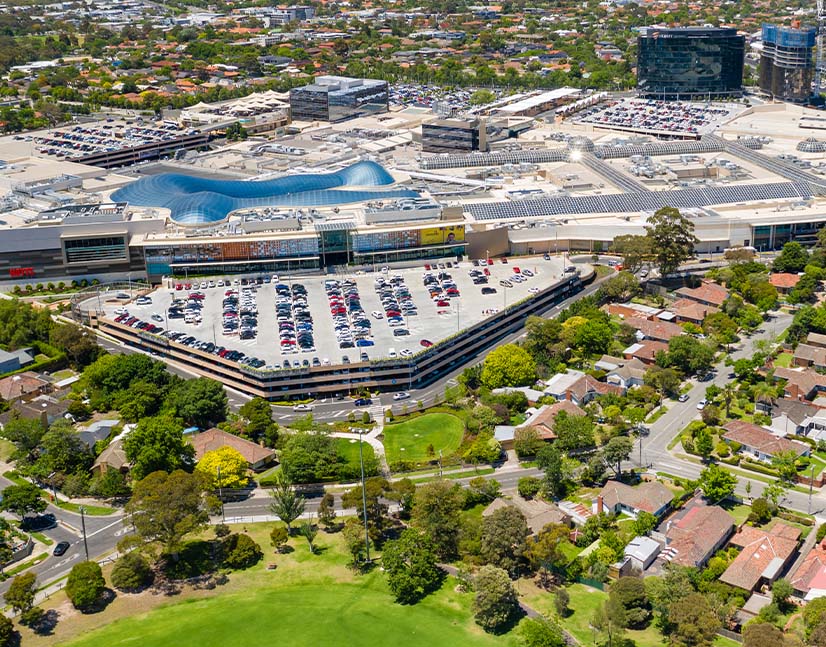
Saving private credit
Private credit was very much in vogue in the last phase of the rates cycle as ultra-low yield led investors into this emerging sector in search of positive income returns. Higher rates have changed the equation, but sector participants say revised approaches to assessing private credit opportunities do not diminish its appeal – especially while borrowers continue to seek this type of funding.
Jeremy Chunn Editorial Consultant KANGANEWS
For several years up to early 2022, investors requiring yield from their fixed income and credit allocations faced a problem thanks to ultra-low rates. For many, at least part of the solution was private credit: a space where liquidity and credit premia could make up for the lack of baseline return for investors with appropriate mandates and that backed their credit skills.
Now the yield environment has changed and – mainstream – “bonds are back”, the question is whether the value proposition for an illiquid and potentially riskier asset class like private credit has changed. Adding to this proposition is the fact that the premium private credit has attracted has itself eased in at least some cases.
When rates were low, the illiquidity and credit premium for private credit deals was typically attractive, according to Nicole Kidd, head of private debt, Asia-Pacific at Schroders Capital in Sydney. As COVID-19 took hold in early-to-mid 2020, liquidity dried up and margins rose even higher – maintaining their appeal until at least September. Into 2021, Kidd continues, the illiquidity premium adjusted tighter relative to bonds.
With inflation easing but still on the table, war in Europe headlining a raft of geopolitical risks and a weak economic outlook, investors must also include qualitative risks, such as sclerotic supply chains, in a sector with more inherent credit risk. “We always ran thorough downside analysis, but since the start of the Russia-Ukraine war we are now much more focused on it,” Kidd continues. “This ensures that not only have we got structures right but we will also be compensated for the potential for downside risks if they happen.”
Despite the challenges, private credit market participants do not agree that the asset class will inevitably lose favour. Higher rates and lower liquidity have in fact created significant opportunities, insists Teiki Benveniste, Sydney-based head of Ares Australia Management.
“In our experience, investors are generally aware that one tends to generate attractive returns in credit if one makes fewer mistakes, clips coupons and gets capital back,” Benveniste says. “We are experiencing less competition from banks and public markets, as well as from smaller players in the direct lending space. As a result, economics have improved through higher base rates, wider credit spreads and increased origination fees.”
The challenges that come with higher rates and a more challenging economic backdrop are generally around higher default risk and lower deal flow, Benveniste says. As yields from investment-grade assets rise with the cash rate, so does private credit – “so much so that private credit exhibits levels of cash yield with defensive characteristics that could make it attractive relative to traditional growth assets,” Benveniste adds.
Aura Group’s Sydney-based director, private credit, Brett Craig, says the appeal of private credit is more than just the nature of its investments. By originating transactions that cut out intermediary layers, he says investors’ returns are less diluted.
“We still think it is a very healthy market,” Craig tells KangaNews. “There are points of strain in all asset classes when interest rates move up rapidly. But the reality is there are still great risk-adjusted returns to be had in the private credit market for those with a focus on quality in the pool.”
Aware Super’s Sydney-based head of income assets, Sonia Baillie, oversees private credit and mainstream fixed-income assets, and she says the private asset class has not been put in the shade by the bond yield recovery. “Floating-rate securities are benefiting from the uplift to base rates as well as credit spreads being quite attractive,” she says. “We can also get higher internal rates of return through the additional fee aspect of private credit.”
Investment process paramount
In a bespoke asset class that covers smaller, less liquid and higheryielding issuers, the credit process is absolutely critical to delivering good risk-adjusted returns. Private credit investors say the detail always
matters.
The fundamentals of credit analysis always apply. “We are looking for well run businesses that have strong balance sheets and are seeking to borrow money to increase their profitability and to grow,” says Brett Craig, director, private credit at Aura Group. Aura does not participate in distressed debt situations, for instance.
There are few shortcuts when assessing a private credit deal, adds Nicole Kidd, head of private debt, Asia-Pacific at Schroders Capital. “We are trying to assess what the right price is for credit risk, for the term of the loan, the duration of our exposure – there are a lot of factors that can go into whether the borrower can perform over the life of a loan. It is all taken into account when we decide whether the return is adequate for the risk of the investment.”
DIVERSE SECTOR
Beneath the headline appeal lies an important nuance in private credit: that it is far from a single, homogenous sector. “What we do versus what another private credit manager does could be completely different in risk-return profile as well as being completely different from the return profile of a bond, whether it be high-yield or investment-grade,” Kidd tells KangaNews.
The concept of receiving an illiquidity premium is more or less constant in private credit, Kidd continues. But the assets and method of investment are highly diverse. This is demonstrated by the wide variety of return profiles available in private allocations.
Returns vary from 150 basis points over a swap benchmark, for investments in companies with an investment-grade profile, to 20-25 per cent. Pay-off can even extend to funding in place of future royalties or anticipated government grants for startups. “It depends on where we sit in the capital structure, the competition, the relationship and the availability of capital,” says Andrew Lockhart, Sydney-based managing partner at Metrics Credit Partners.
Baillie says Aware Super typically falls into the high-yield space. She explains: “It comes down to where funding needs are from corporates in general. Businesses that typically fall into private credit tend to be smaller in revenue and EBITDA than we would see in the public debt space. This also means it is not really a space that requires cannibalisation of public versus private; they really are different funding channels.”
Aware Super’s credit income asset class includes direct lending to Australian and New Zealand corporates through securitisation, corporate loans and leveraged loans – a strategy that started about five years ago with allocations including private and global credit.
This is a diversification strategy within defensive assets, which includes cash, conservative income and fixed-income strategies. “We are getting the benefit of a different source of return for the defensive bucket,” says Baillie, whose team manages about A$2 billion (US$1.3 billion) in private credit with deals typically between three and five years servicing borrowers rated around the double-B level.
Metrics, which manages more than A$15 billion, is mostly focused on residential and industrial property. Lockhart explains that private credit repayment comes on completion of the project, allowing for construction risk, after buyers have settled. This is typically a 24-36 month horizon – which Lockhart compares favourably with securitisation investment.
In mid-2023, sharply higher interest rates are hurting some developers and property owners – but Lockhart says Metrics is not concerned, because of the made-to-measure investment process that it integral to private credit (see box).
“A residential land subdivision in the north-west of Sydney will be quite different from, say, an industrial property in the Brisbane port area, which will be quite different from a residential high-rise apartment building in Melbourne,” he says. “Our role is to understand the risks of a specific transaction and to make sure we have structured it to mitigate risks.”
Benveniste says Ares provides senior-secured loans to mid-to-large corporates in Australia and New Zealand, typically at around 650 basis points above the base rate. “Current asset level yields in the low teens, combined with lower downside risk characteristics, are attractive to those looking for alternatives to traditional growth and defensive asset classes,” he says.
Aura, meanwhile, favours sectors where there is “a distinct necessity for the product”. Craig lists agriculture, essential services, healthcare and nondiscretionary wholesalers as examples.
The company lends to lenders to SMEs, which Craig compares to securitisation for business loans provided by “hand-selected lenders”. Aura aims to optimise cash flow through the balance sheet by increasing stock turns – that is, if a business that turns over stock three times a year can improve to five times a year, its revenues theoretically will be two-thirds higher.
“We run a very short duration book: maturities are all less than 30 months in our portfolio at the moment and 50 per cent of underlying loans mature within three months,” Craig says. “It is really focused on allowing businesses to increase the velocity of cash flow through their balance sheets.”
Aura has elected to stay away from some sectors, including construction, as the negative effects of higher rates spread across the economy. “We have been running a very conservative profile and a very defensive position, particularly over the past year and a half. We have actually seen our arrears dropping in our portfolio –30-day-plus is running at about 1.3 per cent.”
FINDING OPPORTUNITIES
Private credit investors say finding suitable opportunities to invest is as much of a challenge as marketing the asset class. Lockhart says: “There is substantial interest from investors looking to access higher returning defensive assets – the issue is: do we have the opportunity to invest?”
In this respect, tighter credit conditions in global funding markets works in favour of private lenders. With banks’ cost of funding going up, businesses are likely to be more receptive to alternatives. “We see reduced competition and less activity from the banks, and therefore very strong returns across a very broad range of sectors and industries that investors in corporate bonds in the Australian market don’t get access to,” Lockhart tells KangaNews.
Funds have to stay engaged, however. Lockart continues: “To be relevant in the Australian market, we need to be relevant to a broad range of borrowers, banks and corporate advisers. If the focus is very narrow – for instance just doing private equity sponsored deals – an investor will have a much smaller opportunity set to deliver good returns for investors.”
With volatile bond yields and regular periods of capital market turbulence, there has been no shortage of opportunities in private, bespoke transactions and the securitised space, says Baillie. She highlights the consumer discretionary and renewable energy sectors as ones that tend to be relatively prominent. Baillie concludes: “Australia is still viewed as a very attractive investment landscape and there are likely more willing investors in the private credit space than there are the available deal opportunities. This has kept the performance of the sector pretty stable.”















